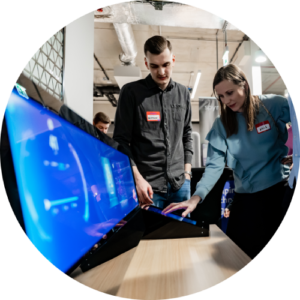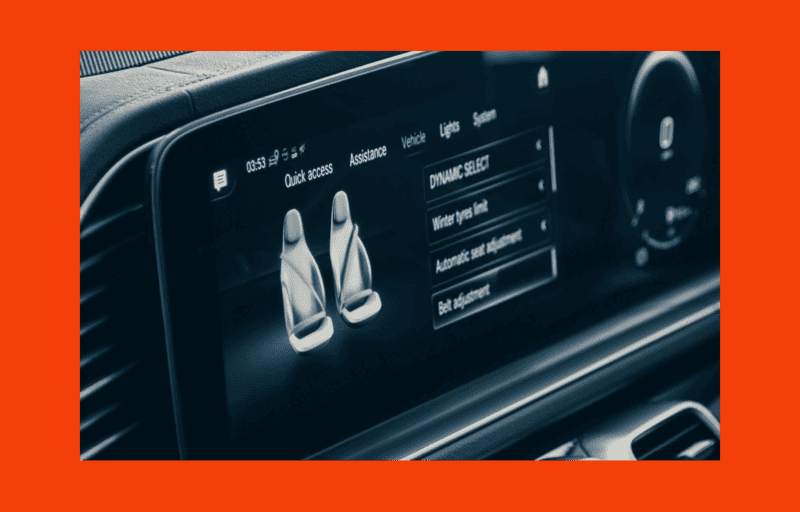Top 5 Embedded HMI UI Frameworks for 2025
Embedded human-machine interfaces, or HMIs, require UI frameworks capable of delivering smooth, visually rich, and highly responsive graphics across diverse hardware platforms, from low-power microcontrollers used in everyday appliances to advanced SoCs powering automotive digital cockpits.
Below, we explore five of the leading embedded UI frameworks, both open-source and commercial, that are widely adopted in automotive, industrial, and consumer electronics. For each, you’ll find an overview of the vendor or developer, core features, known limitations, best-fit use cases, licensing details, and links to official resources.
Qt – Mature, versatile framework for embedded UI
Qt, developed by The Qt Company, is one of the most established frameworks for building graphical user interfaces and applications in C++. It offers a mature toolkit that scales from desktop environments to embedded devices, making it a popular choice for automotive, industrial, medical, and consumer HMIs.

Architecture and programming model
Qt provides flexibility in how UIs are built:
- Qt Widgets / C++: For traditional or low-level UI programming.
- Qt Quick / QML: A declarative language with JSON-like syntax and JavaScript for logic. This approach enables designers and developers to define interfaces, animations, and state-driven behaviour rapidly.
Behind the scenes, Qt Quick relies on a scene graph rendering model. UIs are represented as a tree of items in memory and rendered via OpenGL, OpenGL ES, or other graphics APIs. This retained-mode rendering allows batching and optimisation, which improves GPU performance and keeps animations fluid, even on embedded hardware.
Qt separates the UI layer (QML, Qt Quick, or Widgets) from the backend logic (C++, Python, etc.). Interaction is handled via its well-known signals and slots mechanism, supporting highly responsive, event-driven applications.
Platform support and tooling
Qt’s biggest strength is cross-platform coverage:
- Desktop: Windows, Linux, macOS
- Mobile: Android, iOS
- Embedded: Linux (with Wayland or framebuffer), QNX, RTOS, and Qt for MCUs (optimized for bare-metal or RTOS-driven devices).
This scalability allows the same framework to power high-end in-vehicle infotainment systems, industrial dashboards, and low-footprint microcontroller displays.
The ecosystem includes robust development tools:
- Qt Creator: Official IDE with code editing, debugging, and GUI design.
- Qt Design Studio: Visual environment for creating QML-based UIs and animations.
- Profiling and debugging tools: Such as GammaRay and Qt Inspector for live inspection on target devices.
These shorten iteration loops between design and development — crucial in fast-moving sectors like automotive HMI.
Strengths
- Cross-platform reusability: One codebase can serve desktop, embedded, and mobile systems, including specialised OSes like QNX.
- Native performance: Applications compile to C++ and run close to the metal, making Qt suitable for real-time UIs like instrument clusters or medical device interfaces.
- Declarative UI with QML: Ideal for rich, animated, and touch-driven HMIs, with support for shaders and 3D content.
- Extensive libraries: Networking, multimedia, sensor APIs, 2D/3D graphics, and ready-to-use UI components.
- Design and development synergy: Built-in tools support collaboration between engineers and designers.
- Proven reliability: Used in long-lifecycle products across automotive (e.g., MBUX in Mercedes-Benz), medical, and industrial automation.
Licensing and commercial support
Qt is offered under a dual license:
- Open-source (GPLv3, LGPLv3): Suitable for certain non-commercial or dynamically linked use cases.
- Commercial license: Includes static linking rights, commercial-only modules (e.g., Qt for MCUs), long-term support, and guaranteed professional assistance.
In regulated industries (automotive, medical, aerospace), organisations typically choose the commercial route for compliance, confidentiality, and lifecycle stability. The Qt Company and its partners (e.g., KDAB, ICS) provide professional services, consulting, and certified developer training.
Slint – lightweight embedded UI toolkit in Rust/C++
Slint is a modern, lightweight UI toolkit developed by SixtyFPS GmbH (formerly “SixtyFPS,” reflecting its goal of consistently delivering 60 FPS graphics). It’s open source, actively maintained, and available under flexible licensing models, with commercial support for embedded projects.
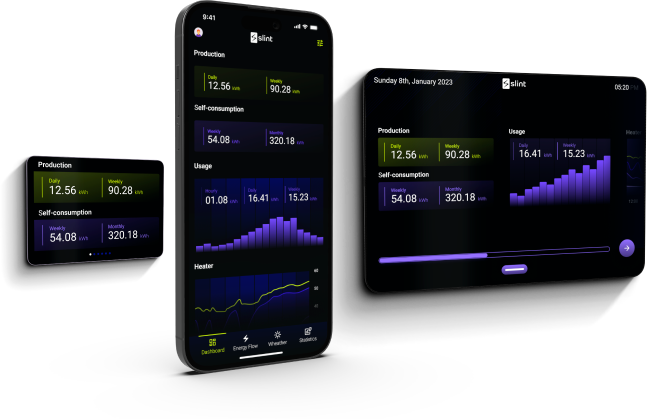
Architecture and programming model
Slint takes a declarative approach inspired by QML but designed to be leaner and more predictable. Interfaces are defined in .slint files using a domain-specific, JSON-like language that describes components, layouts, states, and behaviour.
The Slint compiler translates these files into native Rust or C++ code. This design removes the need for a heavy runtime or embedded scripting engine, resulting in extremely small binaries and fast startup. The core runtime requires under 300 KB of RAM, making it well-suited for microcontrollers and constrained devices.
Its property-binding system ensures UI elements update reactively when data changes, similar to Qt or React. Rendering backends are modular: OpenGL ES for GPU-accelerated platforms, a lightweight software rasteriser for MCUs without a GPU, or integrations with Qt and Skia for more advanced use cases.
While Slint is implemented in Rust for memory safety, developers can work in C++, Python, or JavaScript through generated bindings. This allows safe, modern UI development without forcing a full Rust stack.
Platform support and tooling
Slint was designed for embedded systems first, but it runs across desktop, web, and mobile as well:
- Embedded: Linux with or without a windowing system, bare-metal microcontrollers with framebuffers or SPI displays.
- Desktop: Windows, macOS, Linux.
- Web: WebAssembly with WebGL rendering.
Its developer experience focuses on speed and integration:
- Live preview: Hot reload with VS Code extension and language server.
- Figma Plugin: Direct export of UI elements from design to Slint code.
- Inspector and debugging: UI property editing, device previews, and CI-ready testing.
- Multi-language APIs: Native support for Rust, C++, Python, and JavaScript.
Strengths
- Ultra-lightweight footprint: <300 KB runtime, no garbage collector, fast startup.
- High performance: Smooth 60 FPS animations even on modest embedded hardware.
- Rust-based safety: Memory-safe core with C++ APIs available for gradual adoption.
- Declarative reactive UI: Simplifies dynamic HMIs with automatic property updates.
- Dependency-free runtime: No OS or heavyweight framework requirements.
- Designer-developer workflow: Live previews and Figma integration accelerate iteration.
- Flexible integration: Can coexist with Qt or other frameworks to support hybrid migrations.
Licensing and support
Slint uses a dual-license model:
- GPLv3 for open-source projects.
- Apache 2.0 (royalty-free) for proprietary desktop, mobile, and web apps.
- Commercial license for embedded systems, including direct vendor support and long-term options.
This flexible approach removes runtime royalties for many platforms and lowers entry barriers compared to traditional frameworks. Commercial licensing is priced to be accessible to startups and smaller OEMs, with support provided directly by the Slint team.
Flutter – high-productivity UI toolkit with custom rendering
Flutter is an open-source UI framework created by Google, first released in 2017 and rapidly adopted from 2019 onward. Originally designed for mobile apps, Flutter has since expanded to desktop, web, and embedded devices. It is also the default UI layer for Google’s Fuchsia OS.
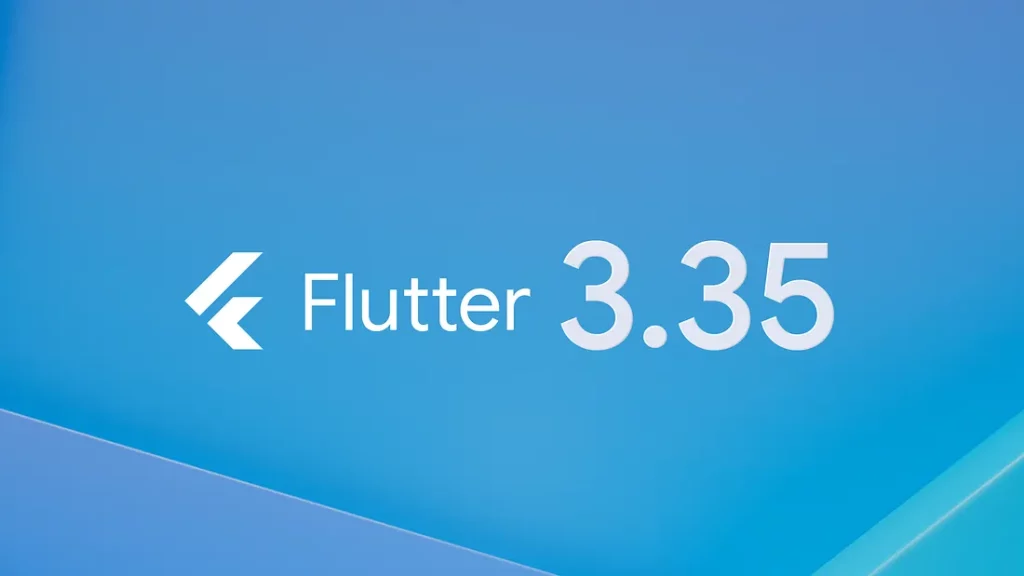
Architecture and programming model
Flutter’s core distinction is that it renders every pixel itself via its own graphics engine, instead of relying on native OS widgets. This approach ensures consistent look and feel across platforms, while also enabling highly customised UIs.
Applications are written in Dart, Google’s modern object-oriented language designed for UI development. Dart supports features such as async/await, a declarative reactive framework, and both JIT (for fast development cycles with Hot Reload) and AOT compilation (for native ARM/x86 binaries in production).
The programming model is widget-based and declarative: developers define a widget tree in Dart code that describes UI structure and behaviour. When state changes, Flutter rebuilds the necessary widgets, conceptually similar to React but without a JavaScript bridge.
Under the hood:
- Rendering engine: Uses Skia (also used in Chrome) for GPU-accelerated graphics; transitioning to Impeller, a next-gen runtime that reduces shader compilation stutter and provides more predictable performance.
- Layered architecture: A C/C++ core handles text, graphics, and the Dart VM, while the majority of the framework (widgets, gestures, animations) lives in Dart for flexibility.
Platform channels: Native integration via bridges to Android (Java/Kotlin), iOS (Swift/Obj-C), or other system APIs, enabling device access (camera, sensors, etc.).
The result is fluid 60–120 fps rendering of complex UI, animations, and graphics, if hardware acceleration is available.
Platform support and tooling
Flutter started as Android/iOS-only but now supports:
- Mobile: Android, iOS (stable).
- Desktop: Windows, macOS, Linux.
- Web: Via CanvasKit/WebAssembly.
- Embedded: Through custom embedders.
Google provides example embedders for Linux framebuffer, and companies like Toyota have successfully deployed Flutter in automotive infotainment systems (AGL/Wayland), citing smooth performance and developer productivity via Hot Reload.
Tooling is a major strength:
- SDK and CLI (flutter): Manages builds, runs, and deployments.
- Hot Reload: Near-instant injection of Dart code changes into a running app.
- DevTools: Web-based suite for profiling, memory inspection, widget trees, and performance timelines.
- IDE Plugins: Deep support for VS Code, Android Studio/IntelliJ.
- UI Design Tools: While Flutter lacks an official WYSIWYG editor, third-party tools (e.g., FlutterFlow, Adobe XD plugin) allow drag-and-drop prototyping that generates Dart code.
- Testing: Built-in framework for unit, widget, and integration tests, including gesture simulation.
- Accessibility and i18n: Semantics tree, right-to-left support, and global font handling via ICU.
Hardware and performance considerations
Flutter assumes a GPU-capable environment (OpenGL ES 2.0+/Vulkan). Memory and storage footprint is modest by mobile standards (release builds typically 10–20 MB), but too heavy for MCUs. Suitable targets include Raspberry Pi 4, NXP i.MX8M, and comparable embedded Linux platforms. Low-power CPUs without GPU acceleration (e.g., i.MX6 ULL) struggle.
Strengths
- Custom UI control: Full rendering stack allows branded, highly animated UIs without OS constraints.
- Smooth performance: 60–120 fps rendering with predictable timing (especially with Impeller).
- Cross-platform code reuse: Single Dart codebase spans mobile, desktop, web, and embedded.
- Developer productivity: Hot Reload + declarative widgets = very fast design iteration.
- Ecosystem and community: Large package ecosystem (e.g., MQTT, Modbus, Bluetooth), plus strong Google backing.
- Responsive design and theming: APIs for adapting to multiple screen sizes, resolutions, and orientations.
Licensing and support
Flutter is licensed under BSD, making it royalty-free and permissive for commercial projects. Google and the open-source community maintain it, but unlike Qt or commercial HMIs, there is no official enterprise support program. Instead, companies often rely on consultancies or the global developer community.
Google itself uses Flutter in production (e.g., Google Pay, Fuchsia), reinforcing its strategic status. While some concerns exist about Google’s project longevity, Flutter has consistently grown, with continuous investment into embedded use cases.
Is it for you? Flutter is attractive for industries needing polished, smartphone-like interfaces on embedded Linux hardware (e.g., automotive, medical devices, consumer electronics). It combines modern developer ergonomics, smooth performance, and cross-platform reach — provided the target system has sufficient GPU resources.
React Native – bridging web and mobile for cross-platform UIs
React Native (RN) is an open-source framework developed by Meta (Facebook) and released in 2015. It extends the popular React paradigm from the web to mobile, allowing developers to build native iOS and Android apps with JavaScript and TypeScript. While its focus is mobile, the ecosystem now includes extensions for desktop, web, and even embedded use cases.
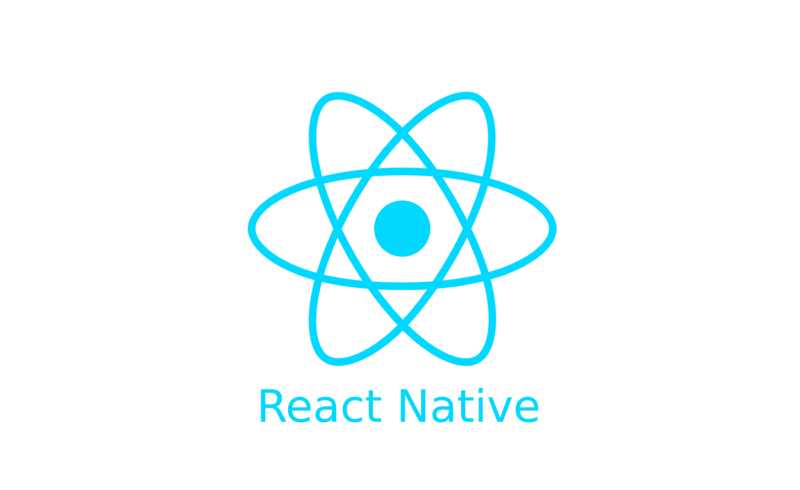
Architecture and programming model
React Native adopts a declarative, component-based model similar to React for the web. Developers write UI in JSX (XML-like syntax) and style with JavaScript objects that resemble CSS. Logic runs in JavaScript/TypeScript via engines like Hermes (lightweight, RN-optimised) or V8. Each RN component maps directly to a native widget — for example, <Text> becomes a UILabel on iOS or a TextView on Android. This approach distinguishes RN from Flutter, as RN leverages the native rendering stack rather than re-implementing its own.
Traditionally, RN used a JavaScript bridge:
- The JS runtime managed application state and logic.
- An asynchronous bridge communicated diffs (from React’s virtual DOM) to the native layer.
- The native layer updated or created UI widgets accordingly.
This worked, but frequent cross-bridge communication could introduce latency and performance overhead.
To address this, RN is rolling out The New Architecture:
- Fabric renderer: A C++-based rendering layer that unifies logic across Android and iOS, enabling synchronous, batched updates and smoother UI.
- TurboModules: Faster, lightweight native module system with direct JS-to-native calls.
- Hermes engine: Optimised for fast startup and reduced memory usage.
This shift significantly improves performance, consistency, and scalability in complex apps (since RN 0.70+).
For developers, RN feels familiar: functional/class-based components, hooks for state, and access to the vast npm ecosystem.
Platform support and tooling
Primary targets:
- iOS and Android (full support).
Extended targets:
- Windows/macOS: Microsoft’s RN forks for UWP, Win32, and Cocoa apps.
- Web: React Native Web maps RN components to DOM elements for partial code sharing.
- Embedded/Linux: Experimental ports (react-native-linux, Yocto builds) and common use via Android-based embedded systems (e.g., smart TVs, IVI). Amazon reportedly uses RN for Prime Video’s TV app.
- Others: tvOS, Raspberry Pi (community-driven).
Toolchain:
- CLI + metro bundler: For build/run workflows.
- Fast refresh: Preserves state while injecting JS changes in real time.
- Debugging: Chrome DevTools, VS Code, React DevTools, plus Flipper for inspecting layout, network, and logs.
- IDEs: Typically,
- Design tools: No official WYSIWYG; devs rely on Storybook for isolated component development or hand-coded UI from design specs.
Hardware and performance considerations
- Requirements: A capable CPU and several hundred MB of RAM (modern phones are ideal).
- Rendering: RN uses the OS’s native rendering pipeline, not its own GPU engine. Performance is generally “native” for widgets like lists and scroll views.
- Constraints: Bridge overhead can stress weaker CPUs or frequent state-updates. Fabric mitigates this by moving rendering logic closer to native.
- Embedded fit: RN works best on Android-based devices (TVs, IVI, set-top boxes) but is too resource-heavy for MCU-class hardware.
Strengths
- Web-to-mobile skill transfer: React devs can move into native app development with minimal retraining.
- Native look and feel: RN uses actual native widgets, giving apps platform-appropriate UX out of the box.
- Large ecosystem: Thousands of libraries/plugins for device APIs, charts, animations, Bluetooth, etc.
- Fast iteration: Fast Refresh streamlines UI prototyping and bug fixing.
- Cross-platform code sharing: Major code reuse between iOS/Android, with frameworks like Expo enabling unified workflows across web and mobile.
- Community and adoption: Widely used by Meta, Microsoft (Teams), Tesla, Shopify, and others. Strong open-source momentum and corporate contributions.
- Native escape hatch: Developers can implement specific components in native iOS/Android code when performance demands it.
- Mature debugging tools: Flipper, Chrome DevTools, and React DevTools give full visibility into RN apps.
Licensing and support
- License: MIT, permissive and royalty-free. No copyleft obligations.
- Support: Maintained by Meta with major contributions from Microsoft and the open-source community. No official enterprise support, but many consultancies specialise in RN.
- Dependencies: RN relies on Xcode (for iOS), Android SDK, and native build chains — troubleshooting often spans RN and platform-level issues.
React Native is appealing where Android-based embedded systems are in play (e.g., infotainment, smart displays, TVs). It allows leveraging existing JavaScript talent, accelerates cross-platform development, and benefits from a huge ecosystem, though resource constraints and reliance on native bridges must be carefully evaluated.
Unreal Engine’s Slate UI – real-time 3D UI framework
Slate UI is the low-level user interface framework inside Epic Games’ Unreal Engine. Originally created to power game HUDs and the Unreal Editor itself, it now underpins all in-game and editor UIs in UE4/UE5. While not distributed as a standalone toolkit, it comes bundled with Unreal Engine and is increasingly used for non-gaming applications, most notably automotive HMI.
Above Slate sits UMG (Unreal Motion Graphics), a higher-level, Blueprint-driven UI system. UMG wraps Slate widgets in a designer-friendly interface, enabling drag-and-drop layout, animation, and logic binding without requiring raw C++ coding. Together, Slate and UMG form Unreal’s full UI stack.
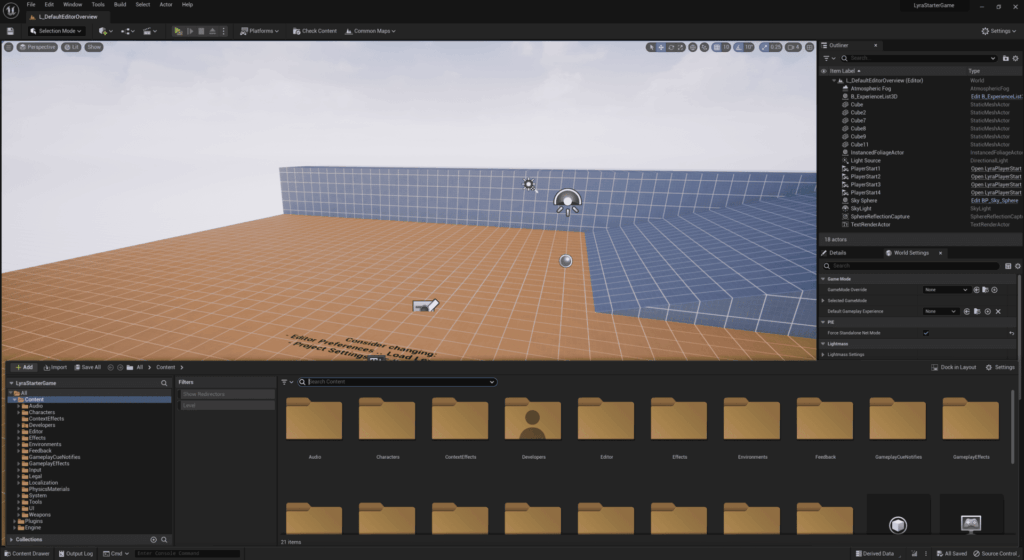
Architecture and programming model
Slate (C++ layer):
- A retained-mode, C++ widget framework (SWidget base class).
- Similar in spirit to Qt Widgets: buttons, panels, text, all built from widgets in a scene-graph hierarchy.
- Rendering is fully engine-driven — Slate does not use native OS controls, but draws everything via Unreal’s GPU pipeline. This makes the UI completely skinnable with shaders, 3D, and custom rendering.
UMG (Blueprint layer):
- A designer-facing layer built on Slate.
- Provides a visual editor for composing UIs (Widget Blueprints).
- Interactivity is added via Blueprint scripting or linked C++ functions.
- Recommended for most HMI projects since it shortens iteration and enables collaboration between designers and developers.
MVVM support:
- UE5 introduces an MVVM framework for UMG. Developers define ViewModels in C++ or Blueprints, which feed data into UI widgets.
- This brings Unreal closer to enterprise UI frameworks like Qt/QML, improving maintainability for large projects with complex state.
Rendering model:
- Slate/UMG widgets are drawn using Unreal’s deferred renderer or optimised UI renderer.
- Can embed 3D models, post-processing, particle effects, or even full real-time environments directly in the UI.
- Automotive examples include 3D car renderings within dashboards (e.g., Lotus, GMC Hummer EV).
Programming options:
- C++ (Slate): Build custom SWidgets, override tick/paint, compose in layouts — used for bespoke controls.
- Blueprint (UMG): Drag/drop widgets, animate transitions, script interactions visually.
- Hybrid: Use Blueprints for layout + interaction, while exposing data/models from C++ systems.
Platform support and tooling
Supported platforms:
- Desktop: Windows, Linux, macOS (development).
- Deployment: Windows (incl. Embedded/IoT), Linux (customisable), Android, iOS, major consoles.
- Automotive: Explicit support for Qualcomm Snapdragon Automotive platforms (Android or QNX), integration with QNX hypervisors for IVI systems.
- Experimental: WebAssembly builds for lighter demos, not production HMIs.
- Not suitable for MCUs or low-end systems — requires OS + modern GPU (Vulkan/DirectX/Metal).
Tooling advantages:
- Unreal Editor: WYSIWYG design of UMG layouts, anchors, responsive design. Animate widgets directly in the editor.
- Blueprints: Node-based scripting for rapid prototyping and iteration. Designers can implement logic themselves.
- One-Click Deploy: Package and push to Android tablets, IVI test rigs, or embedded Windows/Linux in seconds.
- Profiling: Unreal Insights, GPU/CPU profilers, frame budgeting for boot and frame-rate targets.
- Collaboration: Built-in Perforce/Git integration; supports multi-disciplinary teams (artists, designers, programmers).
Automotive/HMI-specific features:
- Fast startup paths for quick boot displays.
- Multi-display support (render one scene across multiple car screens or feed separate outputs).
- Android Single Instance Service for sharing one runtime across several HMI surfaces.
- Niagara VFX integration for animated charge indicators, particle effects, or dynamic backgrounds.
Hardware requirements
- Packaged Unreal UIs are heavyweight: binaries in the 100s of MB, memory footprints in the 200–400 MB range.
- Startup time can be seconds, though Epic optimises for fast-boot HMIs by trimming shaders/assets.
- Target hardware: mid-to-high end SoCs (e.g., Snapdragon 820a or newer) with GPU capability comparable to modern smartphones.
- Not viable for ultra-low-power systems; ideal for premium cars, simulators, or industrial HMIs with GPU-rich environments.
Strengths
- Unmatched visual fidelity: Photorealistic 3D, real-time lighting, reflections, shadows, post-processing. Unique among HMI frameworks.
- Real-time interactivity: Complex animations, physics-driven widgets, smooth 3D/2D transitions. Supports touch, controllers, gestures, voice.
- Design-driven workflow: Designers can directly implement and test UI in-engine using Blueprints, reducing hand-off cycles.
- Integration with simulation and 3D: Perfect for ADAS visualisation, training simulators, digital twins. Reuse of existing game/marketing assets.
- Cross-platform performance: Optimised for 60 FPS rendering across platforms; leverages mature engine abstractions for input, rendering APIs, HDR, etc.
- Future-proof and scalable: Engine updates bring automatic access to next-gen GPU features. Can scale up quality with hardware.
- Source access: Full engine source available for modification; enables deep customisation for enterprise HMI projects.
- Industry momentum: Dedicated Epic HMI team, automotive showcases, Qualcomm/Epic partnerships; growing ecosystem of integrators (Elektrobit, Siili, etc.).
Licensing and commercial model
- License: Free to use, with source code access via Epic’s GitHub.
- Royalty model: 5% royalty on gross revenue beyond $1M for commercial products sold. Internal or free apps are usually exempt.
- Automotive and enterprise: Custom license terms negotiable — often flat fees instead of per-unit royalties (e.g., for GM Hummer EV HMI).
- Support: Enterprise partners get access to Epic’s Custom License Program, including support, source-level assistance, and co-development.
- Open source aspect: Not open-source under FOSS terms, but full source provided to licensees; redistribution prohibited.
- Experimentation: Free to prototype with no fees; commercial obligations arise only at productisation.
Unreal Engine’s Slate/UMG stack is best-in-class for high-end, visually rich HMIs. It enables photoreal 3D dashboards, rapid design iteration, and integration with advanced simulation or sensor data. The trade-offs: a large runtime footprint, demanding hardware, and licensing complexity. For premium automotive, aerospace, and industrial projects where immersive visuals and design-driven workflows are priorities, Unreal stands out as a uniquely powerful option.
Choosing the right framework
No single framework is the “universal best.” The right choice depends on your device, your industry, and your team’s goals. Here’s how the major options compare:
Qt: The safe, versatile choice. Mature, feature-rich, and proven in automotive, medical, and industrial domains. It scales from MCUs to full Linux systems, with strong tooling and long-term support. Ideal when you need stability across varied hardware. Just account for licensing costs.
Slint: The lightweight newcomer. Compact footprint, Rust-friendly, and license-flexible. Best for smaller devices or when you want modern UI capabilities without the overhead of larger frameworks. Think of it as a leaner, open alternative to QML.
Flutter: Designed for polished UIs and rapid iteration. Great if you want app-like fluidity on embedded Linux or plan to reuse code across mobile, desktop, and embedded. Perfect for consumer devices and infotainment systems, provided hardware resources are sufficient.
React Native: Suited to mobile-first or Android-based devices, especially if you already have React expertise. Not the go-to for traditional embedded HMIs, but works well when your HMI doubles as an Android app or companion app.
Unreal Slate UI: For high-end, graphics-intensive projects. If you need cinematic visuals, 3D realism, or a “wow factor” (luxury cars, simulators, premium interfaces), Unreal stands apart. Overkill for simpler HMIs, but unmatched in the right context.
About the author

